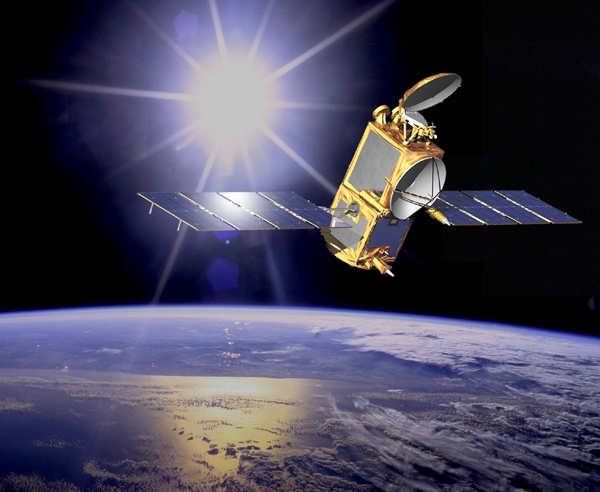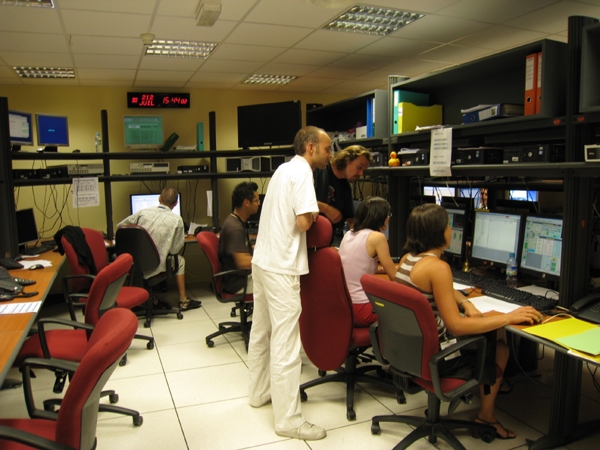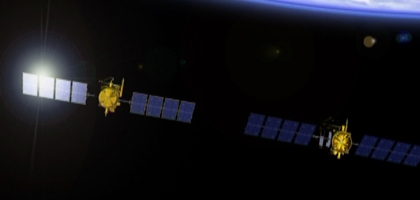J2CCC on hand for critical phases
Jason-2 was launched from Vandenberg Air Force Base, California, on 20 June, becoming the latest in a line of oceanography satellites. Once in space, its instruments were switched on one by one and the satellite was manoeuvred into its final orbit at an altitude of 1,336 km. All these operations were conducted from the Jason-2 command and control centre (J2CCC) in Toulouse.
explains Paul Gélie, in charge of J2CCC development at CNES. “We keep a check on a range of parameters like temperatures and electrical voltages to evaluate the satellite’s health. If there’s a hitch, we diagnose it and then uplink commands to correct the problem.”
Commands are continuously being sent up to the satellite, even when everything is OK, to perform onboard operations like powering up equipment or modifying orbital parameters. The control centre also calculates and uplinks data required to take the satellite to its final operational orbit. Once the satellite is on station, it has to be kept there at the right altitude.
Commands are continuously being sent up to the satellite, even when everything is OK, to perform onboard operations like powering up equipment or modifying orbital parameters. The control centre also calculates and uplinks data required to take the satellite to its final operational orbit. Once the satellite is on station, it has to be kept there at the right altitude.
Pre-planned scenarios
During the night of 3-4 July, Jason-2 reached its final orbit at an altitude of 1,336 km, just 54 seconds behind Jason-1, its predecessor in service since 2001. This was the 5th and last key manoeuvre to position the satellite. Each manoeuvre involved firing the satellite’s thrusters to change its altitude and boost it gradually into the right orbit.
Satellite positioning took longer because of the later launch date on 20 June rather than 15 June as initially scheduled. “The configuration wasn’t as good on 20 June,” says Véronique Couderc, in charge of the Jason-2 ground segment at CNES. “But we had pre-planned scenarios for different launch dates.”
In-orbit commissioning of the satellite is expected to take about 4 months. Once Jason-2 has completed performance checks, Toulouse will hand over to the NOAA* main mission control centre in Washington.
*National Oceanic and Atmospheric Administration. NOAA is also responsible for distributing Jason-2 altimetry products in the United States.
In-orbit commissioning of the satellite is expected to take about 4 months. Once Jason-2 has completed performance checks, Toulouse will hand over to the NOAA* main mission control centre in Washington.
*National Oceanic and Atmospheric Administration. NOAA is also responsible for distributing Jason-2 altimetry products in the United States.
More about
JASON, the ocean observatory
TOPEX/POSEIDON, the beginnings of satellite oceanography
How altimetry works
TOPEX/POSEIDON, the beginnings of satellite oceanography
How altimetry works


